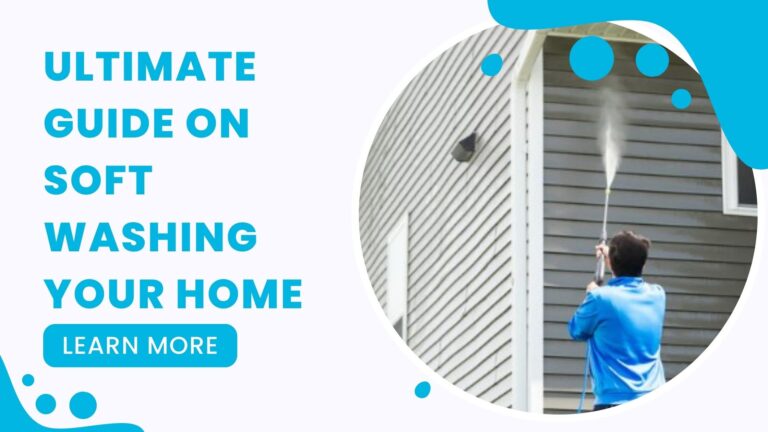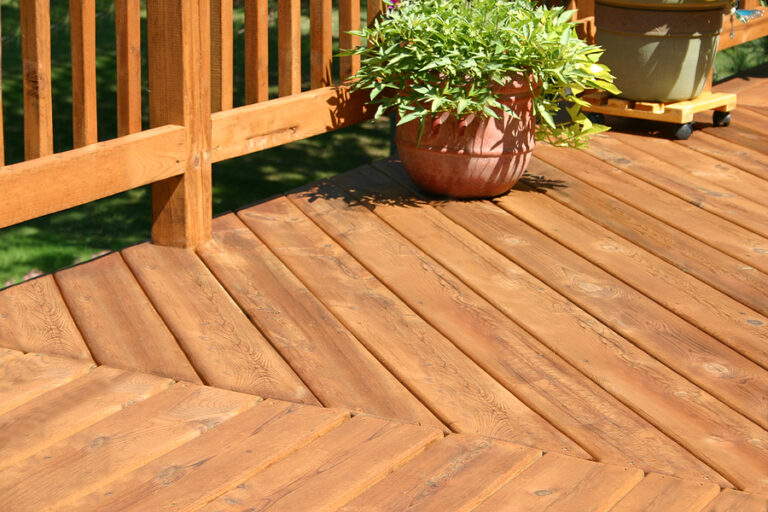How To Use A Pressure Washer Safely: Pressure Washing 101
Pressure washing is a great home improvement project to keep an area or object looking its best. However, pressure washing can be daunting, especially if you’ve never done it before. Pressure washers are a handy tool that can make cleaning tasks much easier and more efficient. Whether removing stubborn dirt from your driveway or reviving your patio furniture, a pressure washer can tackle the job quickly and effectively. However, using this powerful tool safely is essential to avoid accidents or damage. In this article, we will show How To Use A Pressure Washer Safely and guide you so you can use high pressure to clean confidently.
First and foremost, it is essential to familiarize yourself with the different parts of a pressure washer. The main components include the high-pressure hose, nozzle, trigger handle, and machine. Before operating the pressure washer, ensure that all connections are securely tightened and have a firm grip on the trigger handle to maintain control throughout the cleaning process.
To avoid any potential hazards, it is crucial to wear protective gear. Safety goggles should be worn to protect your eyes from any debris or chemicals that may splatter while using the pressure washer. Additionally, wearing ear protection and non-slip shoes will help prevent accidents due to loud noises or slippery surfaces. It is also advisable to wear long sleeves and pants to protect your skin from any flying debris.
Before starting the pressure washer, choosing the correct pressure and nozzle for the task at hand is important. High-pressure settings can easily damage delicate surfaces, so start with a lower pressure setting and gradually increase it if necessary. Different surfaces require different nozzles, so choose the appropriate one according to the cleaning job. Larger nozzle sizes produce broader spray patterns, making them ideal for larger areas, while smaller sizes provide concentrated spray for tougher stains.
Proper technique is essential when using a pressure washer. Always start by holding the nozzle safely from the surface you are cleaning, typically between 12 to 24 inches. Moving the nozzle too close to the surface can damage it and increase the risk of injury due to flying debris. Maintain a steady, sweeping motion while cleaning, and avoid spraying in one spot for too long, as it can cause damage.
Never point the nozzle toward yourself or others when using a pressure washer. The powerful spray can cause serious injuries, even at a distance. It is also important to never use the pressure washer on electrical outlets or fixtures to avoid any electrical hazards. Additionally, always be mindful of your surroundings and avoid spraying toward windows, vehicles, or fragile plants.
After using the pressure washer, it is crucial to handle the machine safely. Turn off the pressure washer and disconnect the power source before performing maintenance or cleaning. Reaching any remaining pressure in the system is recommended by squeezing the trigger handle. Properly store the pressure washer in a safe and dry place, away from children or pets.
By following these safety guidelines, you can confidently use a pressure washer to tackle your cleaning tasks effectively while minimizing the risk of accidents or damage. Remember, safety should always be your top priority when using any powerful tool.
Pressure Wash Tips: Key Takeaways
Using a Pressure Washer Safely
To use a pressure washer safely, it is important to be familiar with the different parts of the machine and how they work. The pressure washer consists of four main components: the motor, the electric pressure regulator, the hose, and the wand.
A pressure washer’s strong pressure can easily cut through flesh, resulting in catastrophic injuries. High-pressure water injection is caused by pressure washers, which is exceedingly dangerous. Amputation or serious nerve damage are potential outcomes of these events.
Before pulling the trigger, you must understand its mighty cleaning power, so wearing protective gear and following safety precautions is critical.
Wear The Appropriate Safety Equipment
There are far too many online photographs and videos of people using pressure washers to clean while wearing sandals, shorts, gloves, and, most importantly, no safety eyewear. Wearing the right safety equipment could prevent most pressure washer injuries.
Footwear
When pressure cleaning, make sure you wear closed-toe shoes or boots. Steel-toe boots are recommended because high-pressure streams can potentially destroy rubber boots.
Gloves
The hand is one of the most common body parts harmed by pressure washers. Gloves are thus one of the most effective types of personal protection. They not only protect your hands, but they also strengthen your grip, reducing the risk of further injuries.
Long Pants
Because you’ll be blasting dirt and debris off surfaces with highly pressurized water, you’ll want to protect your legs from flying debris that could cause skin damage. Furthermore, if you’re washing sidewalks or concrete, you’ll want to shield your legs from the downward flow of water.
Safety Glasses
Just as you should protect your legs from flying debris, you should also protect your eyes from the same dangers. To protect your eyes from grit and other small objects propelled by the pressured water, wear safety glasses or, at the very least, shatterproof sunglasses.
Hearing Protection
We recommend using hearing protection when using a gas pressure washer. Because the motor is not contained, it produces a lot of noise. If you’re not careful, the loud decibels generated by the engine and pump can damage your hearing. Electric pressure washers are often significantly quieter, and hearing protection is unnecessary.
Always Read The Manual
To use this tool safely and effectively, you must understand each of these components and their role. Pressure washers differ in various ways, including features, water temperature, and pressure output.
Read your owner’s manual from beginning to end. They’re usually not very long, but they contain important information about properly using your power washer.
Your user handbook will provide instructions on how to use model-specific safety features in addition to safety tips. There will also be instructions on correctly setting up and disassembling your pressure washer, which could be crucial for your safety.
For example, you should ensure you have plugged your pressure washer into a ground fault circuit interrupter (GFCI) to help prevent electrical shocks.
By knowing how each part of your pressure washer works, you can protect yourself and others from any potential dangers when using this helpful cleaning tool.
Few Extra Power Washing Safety Tips
Keep all electrical connections dry and off the ground using an electric pressure washer. If your hands are damp, don’t touch the plug.
Pay attention to where you’re spraying. Never spray people, animals, or plants with the spray gun. Keep electrical fixtures, power sources, and power lines away from the spray.
Before you start, there are a few things you need to do to prepare the area.
Gather your supplies, including the pressure washer, detergent, hose, extension cord, and nozzle.
Begin by testing the pressure washer on an area of the object you are cleaning to allow you to get a feel for the machine and make sure you’re using it correctly.
Use this information to understand how to use a pressure washer safely to keep your surroundings clean and safe.
Frequently Asked Questions – How To Use A Pressure Washer Safely
1. How do I use a pressure washer safely?
To safely use a pressure washer, start by reading the instruction manual provided by the manufacturer. Familiarize yourself with the basic operation of the pressure washer and understand the safety precautions. Remember to use the right nozzle for the task at hand and wear appropriate safety gear like goggles and gloves.
2. What should I consider before using a pressure washer?
Before using a pressure washer, ensure the area you plan to clean is suitable for power washing. Identify any delicate surfaces or objects that could be damaged by the high-pressure water and take necessary precautions to protect them. Also, check the condition of your pressure washer’s hoses, wand, and nozzles to ensure they are in good working order.
3. Do I use a garden hose or a pressure washer nozzle to clean my car?
If your garden hose won’t handle the job, you can use a pressure washer to wash your car. However, using the right nozzle and maintaining a safe distance is important to avoid damage. Choose a nozzle with a broader spray pattern and lower pressure setting. Keep the nozzle at least one foot from the car’s surface and avoid spraying directly at sensitive components like windows or mirrors.
4. Are gas or electric pressure washers more powerful?
Generally, yes. Gas-powered pressure washers generate higher water pressure (measured in PSI) than electric models. This makes them more suitable for heavy-duty cleaning tasks, such as removing stubborn stains, thick grime, or outdoor mold. However, electric pressure washers are typically quieter, easier to maintain, and more suitable for smaller jobs or residential use.
5. How do I prevent injuries when operating a pressure washer?
Never point the spray nozzle at yourself or others to ensure pressure washer safety. Avoid using the pressure washer on a ladder or unstable surface that could cause you to lose balance.







